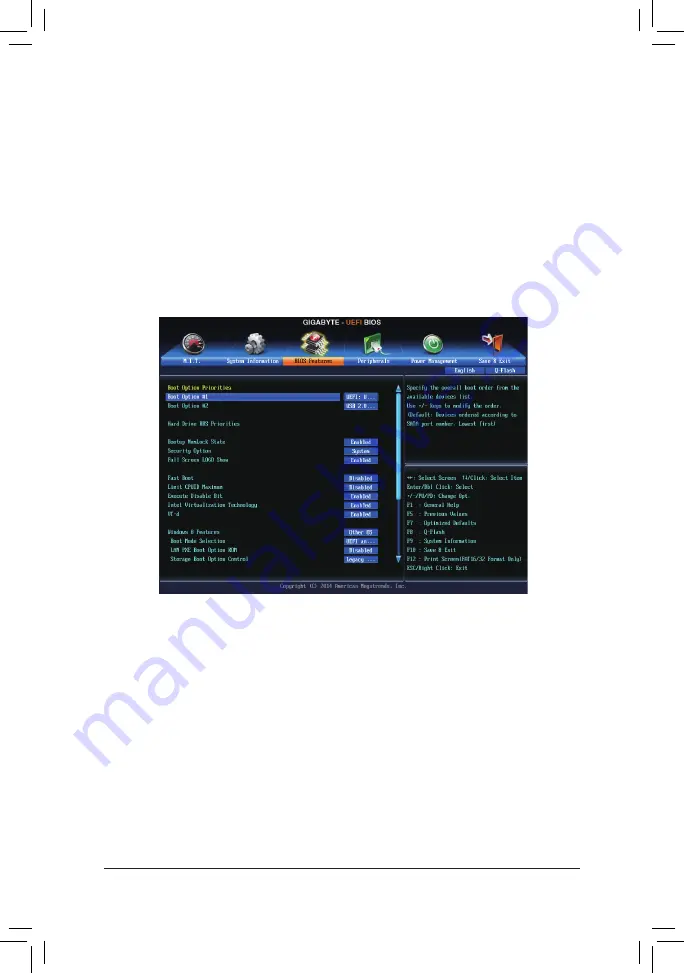
- 22 -
2-4 BIOS Features
&
Boot Option Priorities
Specifies the overall boot order from the available devices. For example, you can set hard drive as the
first priority (
Boot Option #1
) and DVD ROM drive as the second priority (
Boot Option #2
). The list only
displays the device with the highest priority for a specific type. For example, only hard drive defined as the
first priority on the
Hard Drive BBS Priorities
submenu will be presented here.
Removable storage devices that support GPT format will be prefixed with "UEFI:" string on the boot device
list. To boot from an operating system that supports GPT partitioning, select the device prefixed with "UEFI:"
string.
Or if you want to install an operating system that supports GPT partitioning such as Windows 7 64-bit, select
the optical drive that contains the Windows 7 64-bit installation disk and is prefixed with "UEFI:" string.
&
Hard Drive/CD/DVD ROM Drive/Floppy Drive/Network Device BBS Priorities
Specifies the boot order for a specific device type, such as hard drives, optical drives, floppy disk drives,
and devices that support Boot from LAN function, etc. Press <Enter> on this item to enter the submenu that
presents the devices of the same type that are connected. This item is present only if at least one device
for this type is installed.
&
Bootup NumLock State
Enables or disables Numlock feature on the numeric keypad of the keyboard after the POST. (Default:
Enabled)
&
System Date
Sets the system date. The date format is week (read-only), month, date, and year. Use <Enter> to
switch between the Month, Date, and Year fields and use the <Page Up> or <Page Down> key to set the
desired value.
&
System Time
Sets the system time. The time format is hour, minute, and second. For example, 1 p.m. is 13:0:0.
Use <Enter> to switch between the Hour, Minute, and Second fields and use the <Page Up> or <Page
Down> key to set the desired value.
&
Access Level
Displays the current access level depending on the type of password protection used. (If no password is
set, the default will display as
Administrator
.) The Administrator level allows you to make changes to all
BIOS settings; the User level only allows you to make changes to certain BIOS settings but not all.










































